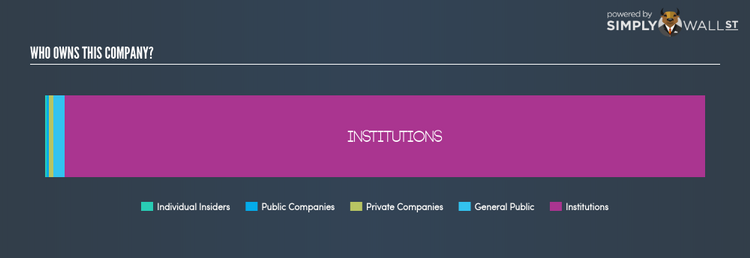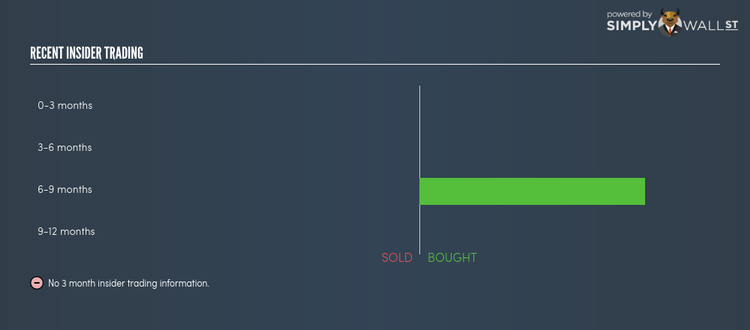Who Are The Largest Shareholders In Ascent Resources plc (LON:AST)?

Today, I will be analyzing Ascent Resources plc’s (AIM:AST) recent ownership structure, an important but not-so-popular subject among individual investors. When it comes to ownership structure of a company, the impact has been observed in both the long-and short-term performance of shares. Since the same amount of capital coming from an activist institution and a passive mutual fund has different implications on corporate governance, it is a useful exercise to deconstruct AST’s shareholder registry.
Check out our latest analysis for Ascent Resources
Institutional Ownership
Institutions account for 96.98% of AST’s outstanding shares, a significant enough holding to move stock prices if they start buying and selling in large quantities, especially when there are relatively small amounts of shares available on the market to trade. However, as not all institutions are alike, such high volatility events, especially in the short-term, have been more frequently linked to active market participants like hedge funds. For AST shareholders, the potential of this type of share price volatility shouldn’t be as concerning as hedge fund ownership is is not significant,indicating few chances of such sudden price moves. While that hardly seems concerning, I will explore further into AST’s ownership type to find out how it can affect the company’s investment profile.
Insider Ownership
Insiders form another group of important ownership types as they manage the company’s operations and decide the best use of capital. Insider ownership has been linked to better alignment between management and shareholders. With a minor stake in AST, insiders seem to have some alignment of interest with shareholders. A higher level of insider ownership has been found to reflect the choosing of projects with higher return on investments compared to lower returning projects for the sake of expansion. In addition to this, it may be interesting to look at insider buying and selling activities. Keep in mind that buying may be sign of upbeat future expectations, but selling doesn’t necessarily mean the opposite as the insiders might just be doing it out of their personal financial needs.
General Public Ownership
With 1.66% ownership, the general public are a relatively smaller ownership class in AST. This size of ownership may not be enough to sway a policy decision in their favour, but they can still make a collective impact on company policies if it aligns with other large shareholders.
Private Company Ownership
Potential investors in AST should also look at another important group of investors: private companies, with a stake of 0.68%, who are primarily invested because of strategic and capital gain interests. However, an ownership of this size may be relatively insignificant, meaning that these shareholders may not have the potential to influence AST’s business strategy. Thus, investors not need worry too much about the consequences of these holdings.
Next Steps:
AST’s considerably high level of institutional ownership calls for further analysis into its margin of safety. This will allow investors to reduce the impact of non-fundamental factors, such as volatile block trading impact on their portfolio value. However, if you are building an investment case for AST, ownership structure alone should not dictate your decision to buy or sell the stock. Rather, you should be looking at fundamental drivers such as Ascent Resources’s past track record and financial health. I urge you to complete your research by taking a look at the following:
Financial Health: Is AST’s operations financially sustainable? Balance sheets can be hard to analyze, which is why we’ve done it for you. Check out our financial health checks here.
Past Track Record: Has AST been consistently performing well irrespective of the ups and downs in the market? Go into more detail in the past performance analysis and take a look at the free visual representations of AST’s historicals for more clarity.
Other High-Performing Stocks: Are there other stocks that provide better prospects with proven track records? Explore our free list of these great stocks here.
NB: Figures in this article are calculated using data from the last twelve months, which refer to the 12-month period ending on the last date of the month the financial statement is dated. This may not be consistent with full year annual report figures.
To help readers see pass the short term volatility of the financial market, we aim to bring you a long-term focused research analysis purely driven by fundamental data. Note that our analysis does not factor in the latest price sensitive company announcements.
The author is an independent contributor and at the time of publication had no position in the stocks mentioned.

 Yahoo Finance
Yahoo Finance 

